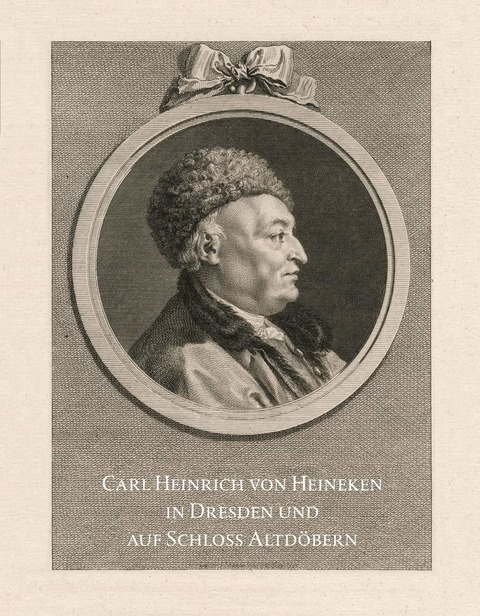Carl Heinrich von Heinecken
* 24.12.1707 Lübeck
† 23.01.1791 Altdöbern
Carl Heinrich von Heineken is undoubtedly one of the most important art scholars and collectors of the eighteenth century. However, to date, his life and literary work have hardly become known beyond the narrow confines of the discipline. As a close confidant of the Saxon Prime Minister Heinrich Count of Brühl, Heineken was initially responsible for Brühl's art collections and library, taking charge of the Dresden copperplate engraving collection at the court of the Saxon Elector Frederick Augustus II in 1746. Heineken succeeded in expanding the electoral collection on a grand scale in just a short time, thus ensuring its international standing.
In 1763, however, Heineken's services to the Dresden collections were thrown into doubt from one day to the next when he was accused of corruption and embezzling state funds. Though the accusations ultimately proved groundless, he was relieved of his post as director of the electoral copperplate collection and at the same time forced to leave his place of work up until this time in Dresden. In December 1764, Heineken retreated to his Altdöbern estate in Lower Lusatia. Isolated from the metropolis of Dresden, he devoted himself extensively to art research during his exile over the three decades that followed, which found expression in an impressive series of publications on the history of the graphic arts.

